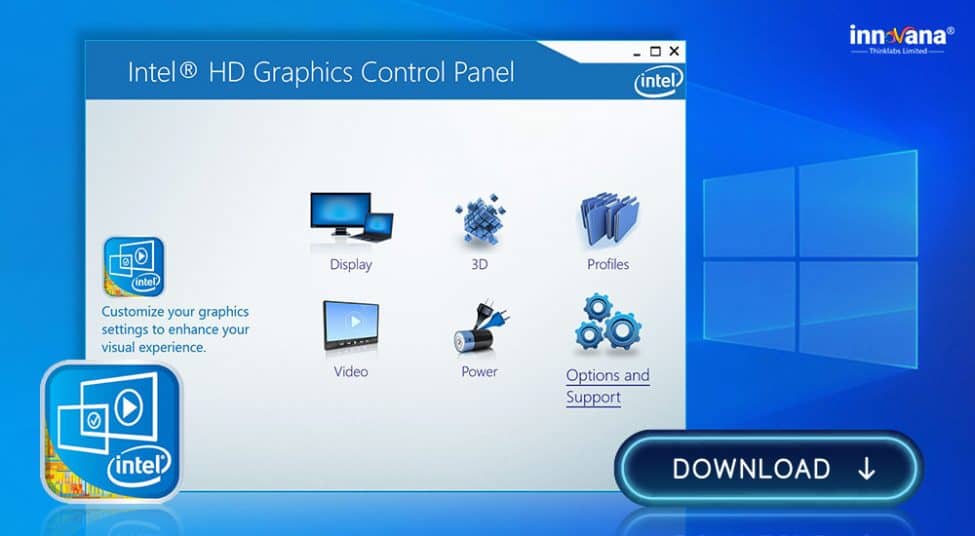

- #HOW TO UNINSTALL INTEL GRAPHICS AND MEDIA CONTROL PANEL INSTALL#
- #HOW TO UNINSTALL INTEL GRAPHICS AND MEDIA CONTROL PANEL PC#
- #HOW TO UNINSTALL INTEL GRAPHICS AND MEDIA CONTROL PANEL WINDOWS#
Step 2: Input sfc /scannow to the Command Prompt window and press Enter. Note that the scan is only performed with administrative privileges. Step 1: Input cmd to the search box and right-click it to choose Run as administrator. This tool can scan the system and repair missing or corrupted system files.

To fix hkcmd module issue, you should use System File Checker to perform a system scan.
#HOW TO UNINSTALL INTEL GRAPHICS AND MEDIA CONTROL PANEL WINDOWS#
When the hkcmd.exe file is infected, Windows system files may get corrupted, leading to the hkcmd errors. Step 3: After the scan is completed, click Fix selected Issues to repair registry issues including hkcmd module registry issues if they are detected. Step 2: Go to Registry located in the left panel, check all the boxes from the Registry Cleaner section and click Scan for Issues.
#HOW TO UNINSTALL INTEL GRAPHICS AND MEDIA CONTROL PANEL INSTALL#
Step 1: Download CCleaner from the website, install and open it. Tip: You may be interested in this post - Is CCleaner Safe? Here Are Answers and Alternatives. Step 2: Locate Intel(R) Graphics Media Accelerator, right-click it and choose Uninstall.Īfter uninstalling the parent application, hkcmd.exe will not appear in Task Manager unless it is malicious. Alternatively, you can go to this interface via Control Panel. Step 1: Press Win + R to get the Run window, input appwiz.cpl, and press Enter to the Programs and Features interface. If you want to uninstall hkcmd along with its parent application, it is necessary to remove Intel(R) Graphics Media Accelerator. Under the Basic mode window, go to the Options and Support tab and uncheck the box of Hot Key Functionality. Step 2: Go to Intel Extreme Graphics and then disable the option – Hotkeys.Īlternatively, you can press Ctrl + Alt + F12 to enter the interface of Intel’s Graphics and Media Control Panel. Step 1: Go to Control Panel by following one way in this post - 10 Ways to Open Control Panel Windows 10/8/7. If you want to disable hkcmd module startup, you can do this via Control Panel. Step 2: Locate hkcmd.exe and click End Process. Step 1: Right-click the taskbar and choose Task Manager. Note: It is not acceptable to delete the executable file manually because this operation may break your Intel Command User Interface eventually. If you suspect a virus infection, these ways are not applicable and you need to take other measures that will be introduced later.

The following are some simple methods to disable hkcmd.exe. Hkcmd.exe is not crucial for the Windows operating system to run properly, so you can remove the hkcmd module based on your actual situations. Some malware is able to disguise as the hkcmd.exe executable and attacks your computer. However, it can be infected and cause problems. So, you are concerned about this.Īctually, hkcmd.exe is a genuine Intel-signed process and it usually runs on system startup. It seems that the process automatically launches itself at every startup. You may notice that the hkcmd.exe process is enabled in Task Manager every time you boot up your PC. Is Hkcmd Module Harmful?Īfter knowing what hkcmd.exe is, you may be curious about another question – is hkcmd module safe? When searching the topic on the Internet, you will find many users also ask this question, as shown below:
#HOW TO UNINSTALL INTEL GRAPHICS AND MEDIA CONTROL PANEL PC#
If your PC has an Intel graphics card, you can simply press the proper key combination to perform several actions, for example, Ctrl + Alt + F12 can take you to Intel’s Graphics and Media Control Panel. Hkcmd.exe is designed to control video-related hotkeys, execute quick keyboard commands and access Intel’s customized graphics properties. Typically, the hkcmd module is installed by Intel 810 and 815 graphics drivers. In short, hkcmd, known as hotkey command, is Intel’s hotkey interpreter. This file is not a Windows system file and it can run at Windows startup without a visible window. Hkcmd.exe, a part of Intel Common User Interface (a legitimate Windows system file that can be found in the C:\Windows\System32\ folder), is an executable file in a PC.


 0 kommentar(er)
0 kommentar(er)
